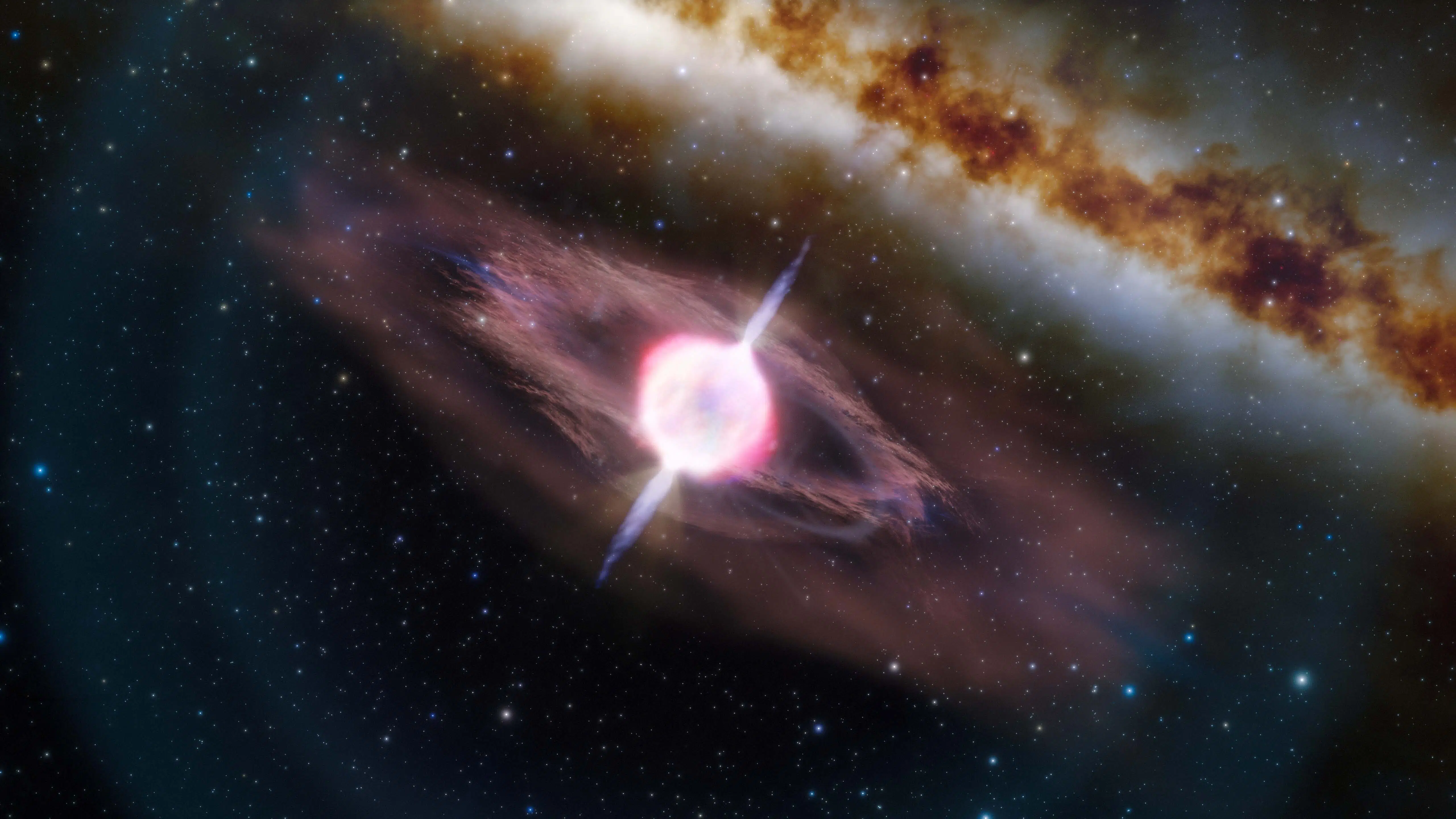
Astronomers observed the most powerful explosion ever recorded in the universe, which gave birth to a black hole. They did so using the Gemini South telescope in Chile operated by NSF’s NOIRLab.
Dubbed Gamma-Ray Burst GRB221009A, this record-shattering the observed the event in the early-morning hours of the 14th October, 2022. The orbiting X-ray and gamma-ray telescopes first detected it nhowever on the 9th October 2022. It occurred 2.4 billion light-years from Earth.
Astronomers believe a supernova explosion triggered it. According to NASA, it captivated them. They called it “the birth cry of a new black hole”. It formed in the heart of a massive star collapsing under its own weight.
Explosion triggered a burst of activity from Astronomers
The aftermath of the explosion triggered a burst of activity. Astronomers around the world raced to analyze it. The explosion was arguably one of the nearest and possibly the most-energetic gamma-ray burst (GRB) ever observed. One of the twin telescopes of the International Gemini Observatory targeted the bright, glowing remains of the explosion. This likely heralded a supernova and gave birth to a black hole.
In close collaboration with staff at the Gemini South, two teams of astronomers obtained the earliest-possible observations of the historic explosion’s afterglow.
In the early-morning hours of Friday, 14, two teams led by graduate students Brendan O’Connor from the University of Maryland and Jillian Rastinejad from Northwestern University conducted two Rapid Target of Opportunity imaging observations .
Astronomers’ observations occurred mere minutes apart within the first observation using the FLAMINGOS-2 instrument, a near-infrared imaging spectrograph. The other observation used the Gemini Multi-Object Spectrograph (GMOS).
The teams now confirm access to both datasets which they will utilize to analyze the energetic and evolving event.
O’Connor said, “The exceptionally long GRB 221009A is the brightest GRB ever recorded and its afterglow is smashing all records at all wavelengths.”
“Because this burst is so bright and also nearby, we think this is a once-in-a-century opportunity to address some of the most fundamental questions regarding these explosions, from the formation of black holes to tests of dark matter models.” He added
Agility of Gemini observatory and staff credited observation of Explosion
Props go to the agility of Gemini Director’s Discretionary Time and efficient data-reduction software like Gemini’s DRAGONS “FIRE” (Fast Initial Reduction Engine). The fast reaction of observers and staff enables the quick production of the image soon after observation.
Gemini Chief Scientist Janice Lee said, “The agility and responsiveness of Gemini’s infrastructure and staff are hallmarks of our observatory and have made our telescopes go-to resources for astronomers studying transient events.”
Astronomers believe that the observation represents the collapse of a star many times the mass of our Sun. That, in turn, launched an extremely powerful supernova.
“In our research group, we’ve been referring to this burst as the ‘BOAT’, or Brightest Of All Time, because when you look at the thousands of bursts gamma-ray telescopes have been detecting since the 1990s, this one stands apart,” said Rastinejad.
“Gemini’s sensitivity and diverse instrument suite will help us to observe GRB221009A’s optical counterparts to much later times than most ground-based telescopes can observe. This will help us understand what made this gamma-ray burst so uniquely bright and energetic.” He added.
When black holes form, they drive powerful jets of particles that are accelerated to nearly the speed of light. These jets then pierce through what remains of the progenitor star. The progenitor star then emits X-rays and gamma rays as they stream into space.
If these jets point in the Earth’s general direction, they appear as bright flashes of X-rays and gamma rays.
Gamma-ray Explosion in Universe may not appear in Decades
Scientists suspect that there may not be any other gamma-ray burst this bright observed for decades or even centuries. The case is still evolving.
Other extraordinary reports indicate disturbances in the Earth’s ionosphere. These appear to affect long-wave radio transmissions from the energetic radiation from the GRB221009A event.
Researchers are still perplexed by how the very-high-energy 18 TeV (tera-electron-volt) photons they observed with the Chinese Large High Altitude Air Shower Observatory could defy our standard understanding of physics and survive their 2.4-billion-year journey to Earth.
Because of its relative proximity to Earth, they categorize the observation as a unique opportunity to better understand the origin of the elements heavier than iron. This, whether they all come solely from neutron-star mergers or also from collapsing stars that trigger GRBs.
O’Connor noted saying, “The Gemini observations will allow us to utilize this nearby event to the fullest and seek out the signatures of heavy elements formed and ejected in the massive star collapse.”
See all the latest news from Greece and the world at Greekreporter.com. Contact our newsroom to report an update or send your story, photos and videos. Follow GR on Google News and subscribe here to our daily email!



